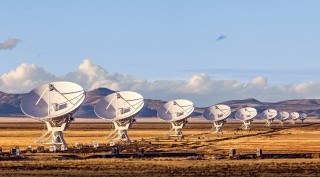A new ground game for broadcasters?
November 8, 2022
The 2020’s have been a decade of big changes, but for broadcasters and MVPDs it’s already been a time of particular transformation. Last year saw the reallocation of C-band spectrum for 5G services and the subsequent migration of providers, either to a new satellite, or to a reimagined approach to delivery – namely moving away from satellite delivery entirely and into a terrestrial-based delivery model that can pave the way for full IP-based delivery. Now that the 5G spectrum transition is, for the most part, in the rear-view mirror, is this “ground game” approach still a viable path forward for MVPD’s?
Terrestrial delivery is something that we’ve been talking about actively since well before the C-band transition (you can read more about it here). “The ground-based option is something we developed in response to the FCC mandate that affected so many of our customers,” explains James Toburen, Affiliate Sales executive for Comcast Technology Solutions. “At first, impacted MVPDs were really in a situation where they absolutely had to make a decision on what to do; but now it’s a decision that’s grounded more firmly in the benefits to the business, which are numerous.”
From “doing dishes” to a path towards full IP delivery
We get into the weeds on the technical aspects of terrestrial distribution in this blog, but as a quick recap:
- Terrestrial delivery replaces the satellite feeds with broadband IP networking, typically fiber, at the cable plant.
- These feeds are still aggregated and assembled into experiences that are delivered to customers.
- Although technology to pre-compress and bundle satellite signals has lowered infrastructure costs from the “dish farms” of the past, fixed bandwidth issues still exist that make it challenging for providers to offer new services; plus, satellite is a uni-directional delivery method that doesn’t allow for the interactive experiences that customers expect and enjoy today.
- With a move to internet delivery, MVPDs gains more scalability and flexibility, and the ability to offer more dynamic services.
“With Managed Terrestrial Distribution, it’s not a completely new delivery model; programming can still delivered to customers via QAM,” Toburen continues. “But our terrestrial distribution paves the way for transitioning away from managing that satellite dish-based headend. With IP-delivered video, you’re gaining not just a lot of flexibility and redundancy, but you’re delivering even more content that folks want.”
Five reasons to transition to terrestrial: a deeper dive
MVPDs and operators are adopting Managed Terrestrial Distribution as a foundational step in their digital transformation; it’s a transition that not only lowers risk but also leads to new dynamic content experiences for an evolving, more competitive marketplace.
For more information beyond the blog links above, read our guide: Five Reasons to Transition to Terrestrial Distribution. It outlines the immediate practical benefits to reimagining your delivery model – gaining quality, efficiency, and reliability – while also providing insights into the long-term benefits to services, business plans, and ultimately your bottom line.
Download the guide here.





